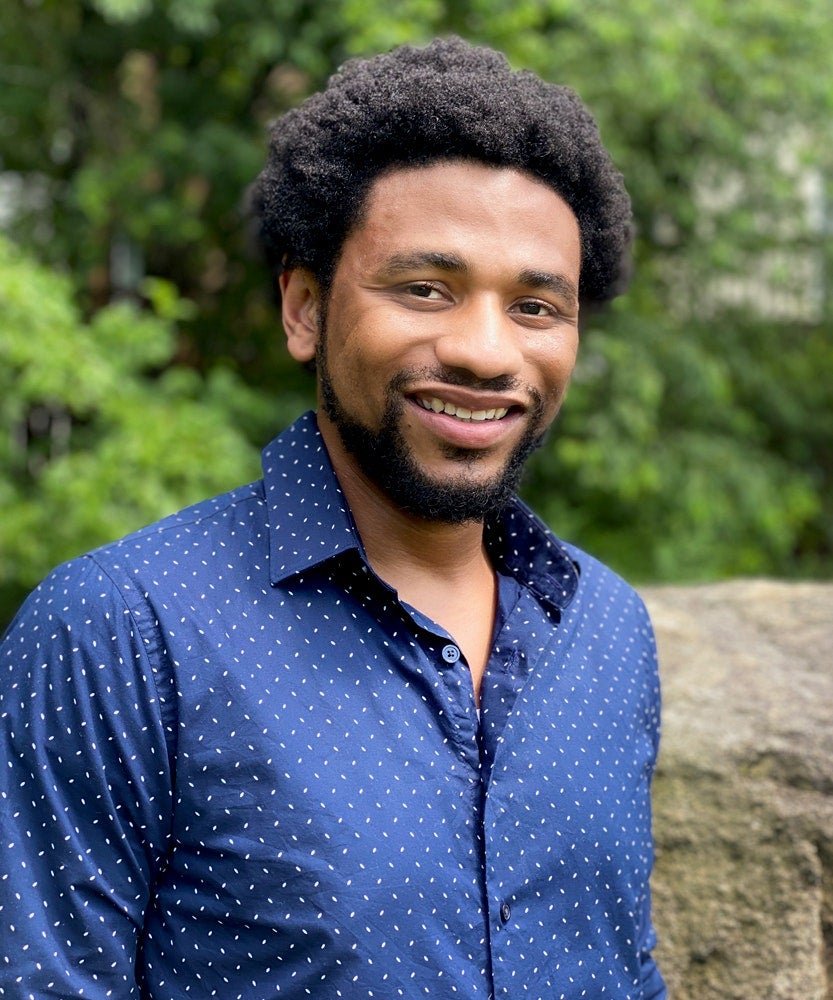While institutions often tout their efforts at attracting a diverse student population, many still do not employ a faculty that reflects their student demographics. UCLA alumnus Damani White-Lewis (’19, Ph.D., Higher Education and Organizational Change), wrote his dissertation on, “The Facade of Fit and Preponderance of Power in Faculty Search Processes: Facilitators and Inhibitors of Diversity,” the timeliness of which has been recognized by the National Association of Diversity Officers in Higher Education (NADOHE) with its Outstanding Dissertation Award. In addition, White-Lewis’ work was honored with a unanimous honorable mention from the American Educational Research Association (AERA), and took third place in the Dissertation Award Competition of the American Association of Blacks in Higher Education.
White-Lewis says that in his review of faculty hiring literature, one of the most historic limitations is the lack of institutional responsibility for creating a diverse professoriate.
“At every turn, from when you start grad school to when you apply for professorial positions, there are imbedded excuses that we tell ourselves as to why we don’t have more folks of color in these positions,” he says. “For instance, the pool isn’t diverse enough. Or when the pool is there, graduate students are going to decline for better paying industry careers. And even when they do select academic careers, only the most high-profile institutions can attract them.
“All these reasons fail to implicate the folks who are actually doing the hiring: the committees, the departments, the institutions. And so, what I wanted my dissertation to be was sort of an exploration into these hiring processes, seeing how committees make these really difficult decisions between a lot of capable candidates.”
White-Lewis says that many of the findings in his study were, “under this umbrella of who gets hired and who doesn’t.”
“It’s as much about the committee and the department as it is about the candidate,” he says. “For instance, a lot of people will think that he or she were not quite the right fit. But using an empirically tested ‘fit’ framework for organizational behavior, it wasn’t assessing for ‘fit,’ which has a reasonably high threshold, but more so these idiosyncratic preferences that determined what faculty thought was quality research or a sustained research agenda. These different evaluated criteria … revealed more about faculty biases and faculty preferences than about how capable or qualified the candidates were.
“And there are a couple of other things too. Administrators have their role in what they can do in terms of their perspectives on change or the urgency and immediacy they have towards supporting faculty diversity efforts or lack thereof. And then there are things happening in departments like votes that are more about politics or who just got hired last year as opposed to the batch of candidates being evaluated this year.”
White-Lewis notes that the factors of gender, race, and sexuality emerged in direct and indirect ways in hiring decisions.
“In the more problematic sense in which race and gender and sexuality emerged was in these really fine [lines] of, ‘Well, the research they do is really narrow’ or ‘It’s so specific. We like to think about big ideas here,’” he says. “Oftentimes, those sentiments are expressed when any aspect of the research – the population, the sample, the theories – were attuned to specific, most often marginalized communities. And the folks who are conducting that research are the racially and gender-minoritized.”
White-Lewis is currently working on a series of papers addressing the issues in his dissertation, including evaluation criteria, the role of administrators, and what academic departments need to do before faculty searches can begin.
“I think departments can do a better job of integrating identity and diversity into the positions themselves through their [hiring] needs,” he says. “If you say, ‘We need somebody that studies inequities in biomedical sciences,’ there are racially minoritized folks who are typically on the frontlines doing that research. And so, if you don’t make that a priority before the search begins, then you’re artificially constraining who is eligible to apply.”
White-Lewis is a postdoctoral scholar at the University of Maryland, College Park, working under a NSF-supported grant, the Alliances for Graduate Education and the Professoriate (AGEP) program. With his AGEP principal investigator, Professor KerryAnn O’Meara, White-Lewis is using an quasi-experimental survey design that isolates bias and develops interventions for more diverse faculty hiring.
White-Lewis says that the best advice he can offer doctoral candidates seeking faculty positions is to show themselves as capable of wider skills beyond research.
“One general thing is that, specifically for folks of color, you have to demonstrate the facility of the general and the specific,” he says. “Unfortunately, folks who are doing engaged research – at least, I found in my study – are dinged for being too specific. So, they have to show a facility for being able to perhaps teach that 100-level course, or do research that sort of speaks to broad themes of what’s hot in the field.
“I’ve been very intentional to say that it’s not [the candidates’] fault for picking out what they want to study. It’s more about institutions being overly narrow about what is worth studying in the first place.”
To read White-Lewis’ dissertation, “The Facade of Fit and Preponderance of Power in Faculty Search Processes: Facilitators and Inhibitors of Diversity,” visit this link.
For his article on, “The Facade of Fit in Faculty Research Processes,” visit The Journal of Higher Education website.
Photo by Constance Lewis
